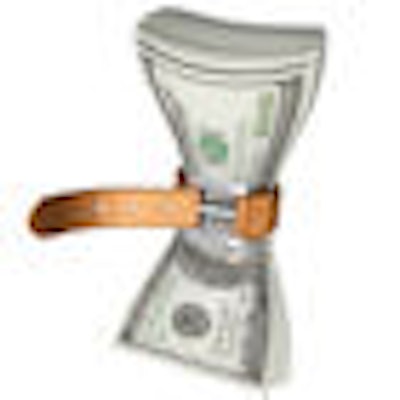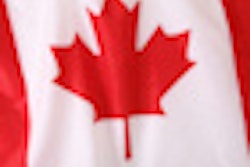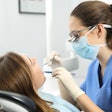
Vermont legislators are considering extending the state's healthcare provider tax to include dentists in an effort to address budget deficit issues. But the state dental association warns that it may be passed on to patients and could have a "chilling effect" on recruiting new dentists.
Gov. Peter Shumlin has proposed extending the tax -- now assessed on the net revenue of hospitals, nursing homes, and managed care companies -- to include dentists and insurance companies. The 3% tax on dentists' gross receipts of services would bring in about $6 million, which subsequently will add about $9 million from the federal government in additional Medicaid funds, he said.
Vermont is facing a $175 million budget deficit, and legislators are scrambling to find ways to generate more revenue rather than just cut services.
Vermont State Dental Society (VSDS) Executive Director Peter Taylor recently presented more than 4,500 signatures opposing the provider tax to state lawmakers. The cash-strapped state should go after more broad-based revenue, such as income tax, sales tax, or taxes on unhealthy products such as soda, he said.
— Peter Taylor, executive director,
Vermont State Dental Society
"This will add significantly to the cost of dental care," Taylor told DrBicuspid.com. "While Vermont lawmakers have difficult budgetary decisions before them this year, the taxation of any healthcare service is no solution and will create yet another obstacle to affordable healthcare for Vermonters."
But legislators are calling it a win-win situation, saying that dentists will get the $6 million back in the form of increased Medicaid reimbursements, while the state would net $9 million for Medicaid. Health officials are promising to raise reimbursements with the added tax revenue.
Private practitioners account for about 80% of services to Medicaid patients in Vermont.
But Taylor said it doesn't make sense to tax people who are taking a proactive role in oral health.
"Taxing healthcare to pay for healthcare is a math problem that just doesn't add up," Taylor said, noting that the tax would penalize patients who use dentists for preventive oral health treatments.
In a letter to those opposing the tax, the governor explained that because such funds are matched with "significant" federal dollars, $1 generated through the assessments yields another $1.40 in federal funds to pay for Vermont's healthcare programs. Without the new tax, he said the state would be forced to either reduce Medicaid reimbursements to dentists or reduce the number of people covered in the program by 20%.
Vermont began levying the medical provider tax in 1991; assessments were added for home health agencies and outpatient prescription drugs in 1999.
Since 1992, Minnesota has also imposed a 2% provider tax on healthcare services to fund its MinnesotaCare program.
The number of states with some type of Medicaid-related provider taxes has increased to 46, plus the District of Columbia, according to the National Conference of State Legislatures. Most states impose the tax on hospitals.
In 2009, more than 62,000 Vermonters -- both insured and uninsured -- reported not getting dental care because they could not afford it, according to Carlen Finn, executive director of Voices for Vermont's Children.
Expanded-function dental assistants who can place restorations and "Tooth Tutors" who specialize in locating dental homes for children are helping to expand care in Vermont, and state legislators are now considering HB 398, a new bill that would create a dental therapist model that would help address access-to-care issues in underserved areas.
Vermont is also one of five states sharing $16 million in funding from the W.K. Kellogg Foundation to develop midlevel providers programs similar to the dental health aide therapist program in Alaska.



















